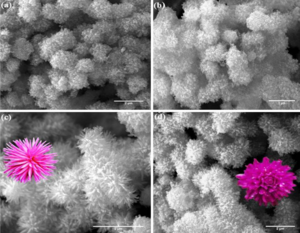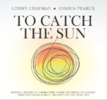
Earlier research found that 3D morphologies developed using a low-cost microwave synthesis technique were not retained during the transformation of titanium dioxide (TiO2) by annealing titanium glycerolate (TGy) powder resulting in low photoelectron conversion efficiencies in dye-sensitized solar cell (DSSCs) devices. This study overcame the challenge, and FESEM imaging showed that 3D morphologies were retained after annealing via the same microwave method and the solvent system by using urea as an aid for a structure-preserving/structure-tuning agent. The morphological tuning and N-doping resulted in the 3D hierarchical titanium dioxide nanostructures, including Gomphrena globosa flower-like and blossomed flower of Dahlia pinnata-like morphologies, and other 3D features. The diffusion of N in the TiO2 matrix was confirmed from XPS and EDX and was also reflected in optical absorption characteristics. The binder-free TiO2 pastes have been prepared from the synthesized TiO2 nanopowders that were employed in the screen printing. The screen-printed photoanodes were used to assemble DSSC devices. The output performances of DSSC reveal the influence of the nitrogen doping in relation to the undoped TiO2-based device. The G globosa flower-like TiO2 nanostructured photoanode exhibited the most pronounced enhancement in short-circuit current density and an increase in the maximum power conversion efficiency, by nearly a factor of 2 compared to pure TiO2.
Keywords[edit | edit source]
Dye-sensitized solar cell; DSSC; titanium dioxide; urea; photovoltaic; Power conversion efficiency
See also[edit | edit source]
- Effect of microwave power irradiation on TiO2 nano-structures and binder free paste screen printed dye sensitized solar cells
- Peanut shaped ZnO microstructures: controlled synthesis and nucleation growth toward low-cost dye sensitized solar cells
- Dual morphology titanium dioxide for dye sensitized solar cells
- Reaction Induced Multifunctional TiO2 Rod/Spherical Nanostructured Materials for Screen Printed Dye Sensitized Solar Cells
- Microwave-Assisted Synthesized Gadolinium Doped Barium Strontium Titanate Nanostructures: Structural and Optical Properties for DSSC Applications
- Impact of Coupled Plasmonic Effect with Multishaped Silver Nanoparticles on Efficiency of Dye Sensitized Solar Cells
- Enhanced Dye-Sensitized Solar Cell Performance using Strontium Titanate Perovskite Integrated Photoanodes Modified with Plasmonic Silver Nanoparticles
- Visible light driven photocatalytic performance of 3D TiO2/g-C3N5 nanocomposites via Z-scheme charge transfer promotion for water purification
- Fabrication of Bimetallic Inlaid Working Electrode for Highly Efficient Dye Sensitized Solar Cells




